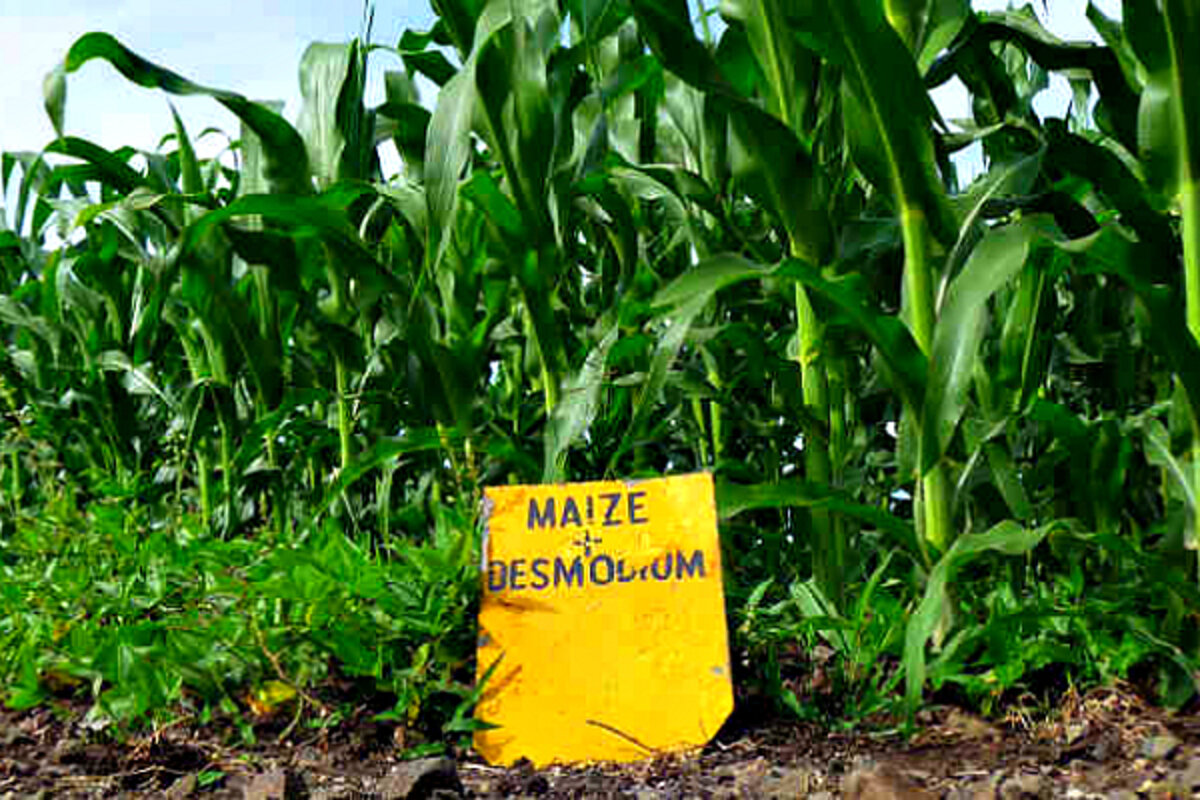'Push-Pull' strategy helps end hunger and poverty for farmers in sub-Saharan Africa
Loading...
[Editor's note: The United Nations has declared 2014 the╠²╠²(IYFF) to highlight the importance of family and smallholder farmers. Food Tank is partnering with the╠²╠²(FAO) to commemorate IYFF and will feature weekly posts and other media highlighting the innovations that family farmers are using to alleviate hunger, poverty, and environmental degradation along with the campaigns and policies that support them.]
The╠²UN Food and Agriculture Organization reports that a╠²quarter of the worldŌĆÖs hungry live in sub-Saharan Africa. Supporting small-scale farmers will be critical to reducing hunger and poverty in the region. has developed an intercropping strategy, called╠²Push-Pull, that helps farmers increase productivity, strengthen soils, and protect staple foods from pests ŌĆō all without expensive chemical fertilizers or pesticides.
Push-Pull was originally designed to help farmers deal with crop loss from two especially destructive pests: stemborers and striga weeds. Family farmers in sub-Saharan Africa often╠²lose up to 80 percent╠²of their crop to╠²stemborers, a type of moth that lays its eggs inside the stems of corn, sorghum, and other staple crops.
Perhaps more insidious is╠²striga, a parasitic plant, also known as witchweed, which stunts crop growth and regularly causes farmers to lose╠²30 to 100 percent╠²of their crop. The combination of these pests often destroys entire harvests and costs an estimated $7 billion╠²every year. Typical pesticides and herbicides that might solve the problem are expensive, environmentally damaging, and largely ineffective once the pests are established.╠²
Push-Pull offers a different solution, introducing plants that╠²naturally repel and attract╠²stemborers to keep them away from crops. The system adds a repellent crop to farmersŌĆÖ fields, such desmodium, and then surrounds the field with a border of attractive plants, such as Napier grass.
Stemborers are then simultaneously pushed away from the maize field and pulled toward the border. In addition to protecting fields from stemborers, the intercropped desmodium plants╠²control striga, producing a substance that╠²causes suicidal germinationŌĆöpromoting strigaŌĆÖs initial growth and then stopping it.This eliminates striga plants from these fields, and because desmodium is a perennial plant, it keeps them free of striga between harvest seasons as well.
Desmodium also functions as a╠²cover crop, which can be plowed back into the soil to increase soil health and nutrient content. Napier grass is also useful as a feed crop for animals, and its root system helps╠²prevent erosion.
So far, more than╠²55,600 farmers in East Africa╠²have implemented icipeŌĆÖs Push-Pull system, resulting in╠²more than triple the average maize╠²yields achieved under previous practices. Icipe is working to expanding the practice across sub-Saharan Africa, connecting with farmers╠²through radio, print materials, and hands-on training programs.
ŌĆó Food Tank () is a think tank focused on a feeding the world better. We research and highlight╠²environmentally, socially, and economically╠²sustainable ways of alleviating hunger, obesity, and poverty and create networks of people, organizations, and content to push for food system change.




